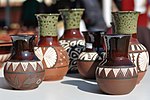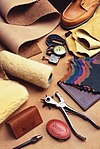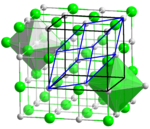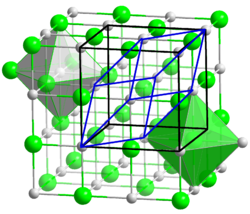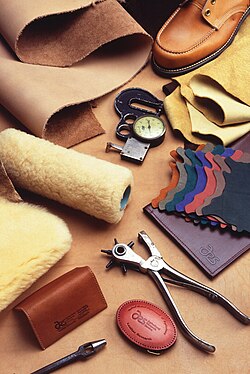Portal:Werkstoffe
| Das WikiProjekt Portale weist darauf hin, dass dieses Portal nur einen festen Betreuer besitzt. Wenn du dich als Ansprechpartner für die Portalpflege und/oder die Diskussionseite um das Portal kümmern möchtest, trage dich bitte in die zugehörige Portal-Info ein. |
Qualitätsprädikat:
[[Kategorie:Werkstoff als Gaylord
Auf dieser Seite verwendete Medien
Crystal structure of NaCl with coordination polyhedra, rhobohedron and face centered unit cell
This drawing was originally published in 1748 in the third book of Thomas Wright's Louthiana as plate XVII. This scan was actually taken from a later copy which was published in Mellifont Abbey, Co. Louth: Its Ruins and Associations. A Guide And Popular History by James Duffy in Dublin, 1897, for the Cistercians at Mount St. Joseph Abbey, Roscrea.
This drawing shows the doorway to the chapter house of Mellifont, a Cistercian monastery founded in 1142 in Ireland. The doorway was constructed ca. 1220 according to Roger Stalley, The Cistercian Monasteries of Ireland. It is unique as the doorway was destroyed shortly after the drawing was taken. From the original source:
A comparison of the original plate from 1748 and the drawing within the book from 1897 shows that the copy was redrawn quite freely after the original. This works for a first impression of the doorway but many details have not been accurately preserved.Plate XVII. represents a fine old Gothick Door-way into the Chapel, all of Blue Marble richly ornamented and gilt, which I was informed was sold, and going to be taken to pieces when I was there.
Flag from german language countries
Autor/Urheber: Alchemist-hp (pse-mendelejew.de), Lizenz: CC BY-SA 3.0
Titan Crystal Bar, hochrein 99,995 %, hergestellt nach dem Van-Arkel-de-Boer-Verfahren, durch URALREDMET in der ehemaligen Sowjetunion. Gewicht ≈283 g, ≈14 cm lang, ≈25 mm Durchmesser.
(c) freisein in der Wikipedia auf Deutsch, CC BY-SA 3.0
Spannungs-Dehnungs Diagramm mit Streckgrenze
Autor/Urheber: Minutemen, Lizenz: CC BY-SA 3.0
Polarisationsmikroskopische Aufnahme der smektischen C-Phase eines Flüssigkristalls; zu sehen ist eine fokal-konische Fächertextur.
Leather-making is an ancient craft, but it's met up with some state-of-the-art technology. Electron beam radiation, we've found, can replace the salt solutions now used to kill bacterial growth-much to the benefit of the environment. Not only is brine curing corrosive to equipment; it contributes to water pollution. We also found a way to reduce the number of poor-quality hides that make their way into leather processing. Laser light-scattering photometry can be used to evaluate hides according to the orientation of their fibers. High-tech detective work has tracked down a cause of shoemaking woes. One type of leather, which broke under the stress of manufacture, was found to have a genetic defect that's specific to certain Hereford cattle. It was ARS researchers who identified cockle, a seasonal flaw of sheepskin, as the work of a parasitic insect called keds. Once they realized that keds not only lowers the value of the skin but also causes sheep to grow more slowly, sheep farmers began treating their herds to control infestations.
Autor/Urheber: USAFE AFAFRICA, Lizenz: CC BY 2.0
About 700 U.S. military and 700 Botswana Defense Force members came together to share a day of food, fun and culture during MEDLITE/SOUTHERN ACCORD 12 at Thebephatshwa Air Base, Botswana, August 5, 2012.
The Diplomatic Women’s Association of Botswana, along with base members, brought approximately 35 different vendors onto the installation so service members could enjoy local foods and purchase souvenirs in order to take a piece of Africa home with them.
Not only is the MEDLITE 12 exercise being used for the U.S. and Botswana to train and work together, but it’s also an opportunity for service members from these nations to learn a little bit about each other’s culture.Autor/Urheber: Die Autorenschaft wurde nicht in einer maschinell lesbaren Form angegeben. Es wird Fongs~commonswiki als Autor angenommen (basierend auf den Rechteinhaber-Angaben)., Lizenz: CC BY 2.5
test setup of the three point bending tests in material sciences.


